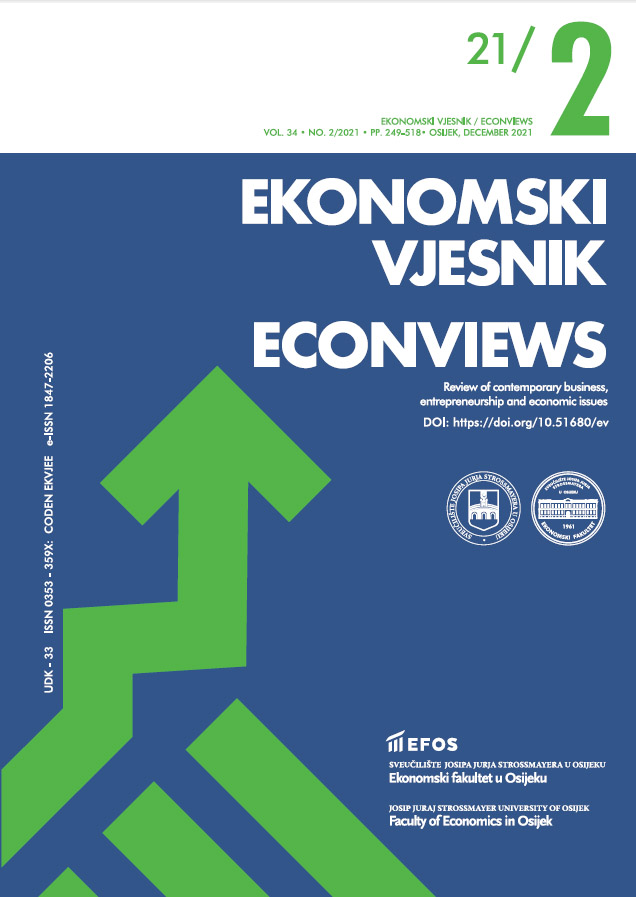The importance of a company’s capital structure in financial relations: The dynamic panel model
The importance of a company’s capital structure in financial relations: The dynamic panel model
Author(s): Dean Učkar, Manuel Benazic, Daniel TomićSubject(s): Business Economy / Management, Financial Markets
Published by: Sveučilište Josipa Jurja Strossmayera u Osijeku, Ekonomski fakultet u Osijeku
Keywords: capital structure; financial relations; Croatia; panel model GMM estimation;
Summary/Abstract: Purpose: The main objective of this research was to determine the impact of capital structure on the profitability of Croatian companies. The second objective was to analyze the consistency of the way in which capital structure is managed with respect to the existing theories of capital structure. Methodology: A survey was conducted on the sample of Croatian companies for the period from 2009 to 2019 using panel model GMM estimation. In order to be included in the sample, all shares listed on the Zagreb Stock Exchange were considered which meet the liquidity criterion and are part of the non-financial sector. Accordingly, the sample consists of 30 shares. Results: The research established a significant relationship between capital structure and profitability, with a negative sign. With these results, Croatian companies are placed alongside other companies from countries that belong to the group of developing countries, and diametrically opposed to the results obtained for the markets of developed countries. Indirectly, the validity of theories of capital structure formation on the Croatian market was tested, and it was proved that the behavior of Croatian companies can best be described by settings of the trade-off theory of capital structure. Conclusion: For Croatian companies, this means that any further use of debt will lead to a decline in profitability. Consequently, this means that domestic companies cannot make significant use of the current situation of low interest rates on loans, and therefore they lag behind in terms of the level of investments made.
- Issue Year: 34/2021
- Issue No: 2
- Page Range: 417-430
- Page Count: 14
- Language: English

